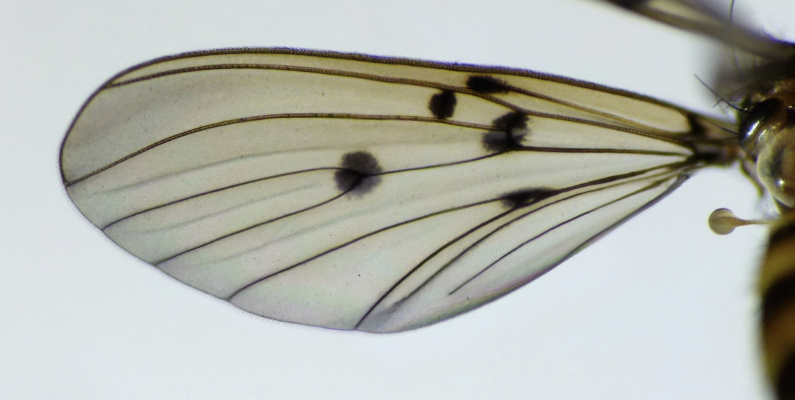
Mycetophilidae is a big word for a family of little flies that are no bigger than 1cm. What they might lack in physical size they make up for in diversity of species with around 3500 unique species found globally. This family is commonly called ‘fungus gnats’ and work by taxonomists to describe them is ongoing. There is still a lot of work to do and likely many more species to discover!
Fungus gnats tend to be forest dwellers, pollinating plants and being kai (food) for other critters. The common name refers to the fact that the larvae often live in soft slimy retreats burrowed into mushroom, toadstool, and other fungal fruiting body. But truth be told we still know extraordinarily little about fungus gnats' life history and ecology.
This presents a fun challenge for professional and mature naturalists to become ‘gnat-tralists’ (aka gnat+ naturalists = ‘gnatralists’) and address some of the gaps in the current gnat knowledge. And exciting news! A new species of fungus gnat has been formally described in just the last month.
It’s small, it’s common, and it seems to love urban gardens, so you’ve probably met it. However, no one is quite sure yet how long it has been in Aotearoa.
It has been formally described and named in Latin as Mycomya quadrimaculata, which roughly translates to ‘four-spotted fungus fly’. The team of taxonomist led by Tūhura Otago Museum Honorary Curator Steve Kerr picked this name to remind others hoping to identify them to keep their eyes peeled for the distinctive four spots on the wing membrane.
More generally the flies are around half a centimetre in length; females are often a little larger than the males. They have banded antennae and bands of the abdomen (called tergites) deep brown and yellow.
You can dive into the full taxonomic description here: https://doi.org/10.11646/zootaxa.5264.3.9

Mycomya quadrimaculata - female, 8.0 mm
Kerr collected specimens from his backyard garden near Forbury Corner here in Dunedin. He found the same undescribed fly in collections from around New Zealand, Tasmania, and South-East Australia, suggesting it is a relatively abundant species. The fly turned up in collections made from lots of different places, including sweep nets in picnic areas of Tasmanian reserves, dead on a windowsill in Porirua, and malaise trap surveys from many areas (for example, Canterbury, Nelson, and Canberra). More recently, a large number of specimens were collected in the Pukaki Scientific Reserve in an area extensively damaged by fire in 2020, suggesting the area has bounced back and is recovering well.
Most of the four-spotted fungus fly specimens in New Zealand were collected in urban and residential areas near sea level and are relatively abundant when compared with other described Mycomya in New Zealand. While Tasmania, Southeast Australia and New Zealand are all in the same biogeographic zones, this distribution pattern could suggest that the fly is adventive – non-native to New Zealand and perhaps arrived via some human help (anthropogenic means).
We have around 230 endemic fungus gnats in Aotearoa and the most comprehensive taxonomic work done on the fungus gnats of Aotearoa was completed a long time ago (1927) by Cawthorn Institute Entomologists André Léon Tonnoir and British entomologist Fredrick Wallace Edwards. Therefore, there are exciting avenues and opportunities to explore with Aotearoa’s gnats – possibly even by ‘ge-gnat-tisists', i.e., gnat scientists who use genetic research methods!
Photographs:
Photo #1: Mycomya quadrimaculata wing
Photo #2: Mycomya quadrimaculata - female, 8.0 mm
